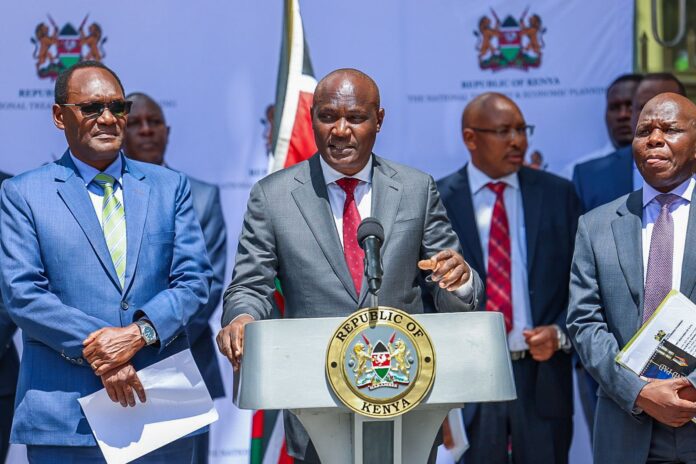Kenya’s external public debt saw a sharp reduction of Sh1 trillion in local currency terms at the start of 2025, driven by the strengthening of the Kenya shilling against major global currencies. This decline has also eased the cost of servicing the nation’s foreign debt.
According to Treasury Cabinet Secretary John Mbadi, the country’s external debt dropped from Sh6.07 trillion in December 2023 to Sh5.09 trillion in January 2025. This represented a significant decrease in the total debt-to-GDP ratio, which now stands at 46.2 percent of the national debt of Sh11.02 trillion, down from 54.7 percent a month earlier.
In dollar terms, however, Kenya’s external debt grew from $38.92 billion to $39.4 billion over the same period. The apparent reduction in local currency terms reflects the shilling’s remarkable 21.1 percent appreciation against the US dollar. The Kenyan currency also gained 29.2 percent against the euro and 24.3 percent against the British pound.
Meanwhile, domestic debt rose by Sh880 billion, reaching Sh5.93 trillion and pushing its share of total debt to 53.8 percent from 45.3 percent the previous year.
“This reduction is attributed to the appreciation of the Kenya shilling against major currencies during the review period,” Mbadi told MPs in his presentation.
The stronger shilling has already yielded tangible financial benefits, cutting interest payments on external debt by Sh31.4 billion. Kenya’s revised 2025 budget policy statement shows that the allocation for interest payments to external creditors has been adjusted from Sh259.9 billion to Sh228.5 billion. Principal repayments have also been revised downwards by Sh29.1 billion, now standing at Sh301.6 billion due to favorable currency revaluation.
The shilling’s strength has enhanced Kenya’s debt sustainability, lowering the debt-to-GDP ratio to 65.7 percent in June 2024 from 72 percent in June 2023. Projections indicate this ratio could fall further to 57.8 percent by June 2028, easing the long-term debt service burden on taxpayers.
Kenya’s external debt remains largely denominated in US dollars and euros, with smaller portions in Japanese yen, Chinese yuan, and British pounds. The dollar accounts for 62.1 percent of the external debt as of June 2024, followed by the euro at 25.5 percent, the yuan at 5.5 percent, the yen at 4.2 percent, and the pound at 2.6 percent.
The debt mix reflects Kenya’s reliance on commercial dollar debt from Eurobonds, syndicated loans, and concessional funding from global institutions like the International Monetary Fund (IMF) and the World Bank.
Multilateral lenders continue to dominate Kenya’s creditor mix, accounting for 55.6 percent of external debt or Sh2.83 trillion as of January 2025. World Bank concessional loans make up Sh1.79 trillion of this amount. Bilateral lenders account for 21.4 percent of the debt (Sh1.09 trillion), with China being the largest lender with outstanding loans of Sh660 billion.
Commercial debt stands at 23 percent of external obligations, totaling Sh1.17 trillion in January, with the bulk of this coming from Eurobonds valued at Sh850 billion. Recent bond market activity has increased Kenya’s outstanding Eurobond debt to Sh972 billion after a $1.5 billion bond sale and a partial buyback of older notes.
The strengthening of the shilling and the strategic management of external debt signal positive strides for Kenya’s fiscal health, offering hope for improved economic stability and a reduced debt burden in the years ahead.







